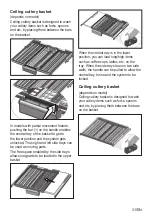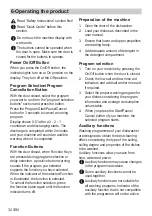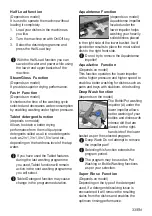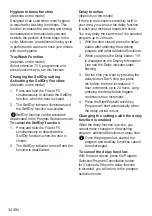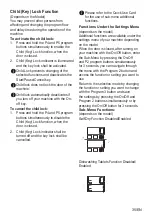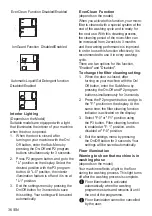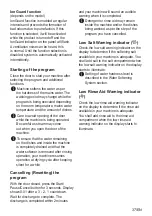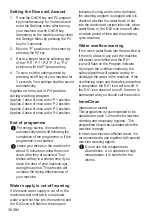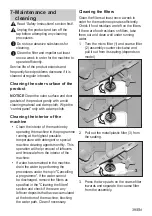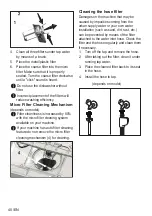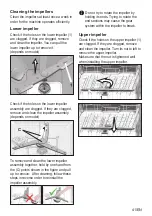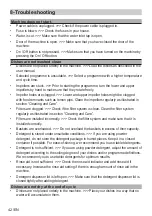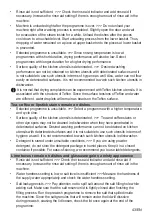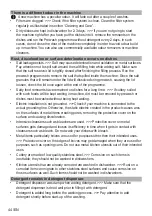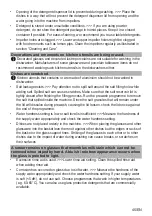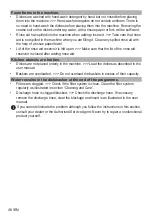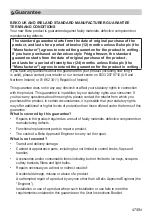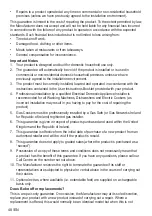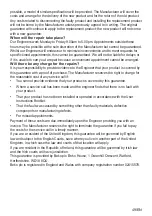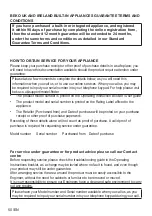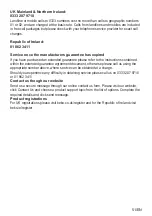
45/EN
• Opening of the detergent dispenser lid is prevented during washing. >>> Place the
dishes in a way that will not prevent the detergent dispenser lid from opening and the
water going into the machine from impellers.
• Detergent is stored under unsuitable conditions. >>> If you are using powder
detergent, do not store the detergent package in humid places. Keep it in a closed
container if possible. For ease-of-storing, we recommend you to use tablet detergents.
• Impeller holes are clogged. >>> Lower and upper impeller holes might be clogged
with food remnants such as lemon pips. Clean the impellers regularly as illustrated in
section “Cleaning and Care”.
Decorations and ornaments on kitchen utensils are being erased.
Decorated glasses and decorated lustre porcelains are not suitable for washing in the
dishwasher. Manufacturers of some glassware and porcelain tableware items do not
recommend washing such kitchen utensils in the dishwashers either.
Dishes are scratched.
Kitchen utensils that contains or are made of aluminium should not be washed in
dishwasher.
• Salt leakage exists. >>> Pay attention not to spill salt around the salt filling hole while
adding salt. Spilled salt can cause scratches. Make sure that the salt reservoir lid is
tightly closed after finishing the filling process. Run the prewash programme to remove
the salt that spilled inside the machine. Since the salt granules that will remain under
the lid will dissolve during prewash, causing the lid loosen, check the lid once again at
the end of the programme.
• Water hardness setting is low or salt level is insufficient >>> Measure the hardness of
the supply water appropriately and check the water hardness setting.
• Dishes are not placed orderly in the machine. >>> When placing the glasses and other
glassware into the basket lean them not against other dishes but the edges or racks of
the basket or the glass support tines. Striking of the glasses to each other or to other
dishes due to the impact of water during washing can cause breaks, or scratches on
their surfaces.
A smear remains on glasses that resembles milk stain which can not be
removed when wiped by hand. A bluish / rainbow appearance occurs when
the glass is pointed to light.
• Excessive rinse aid is used. >>>Lower rinse aid setting. Clean the spilled rinse aid
when adding rinse aid.
• Corrosion has occurred on glass due to soft water. >>> Measure the hardness of the
supply water appropriately and check the water hardness setting. If your supply water
is soft (<5 dH), do not use salt. Choose programmes that wash in higher temperatures
(e.g. 60-65°C). You can also use glass protective detergents that are commercially
available.

